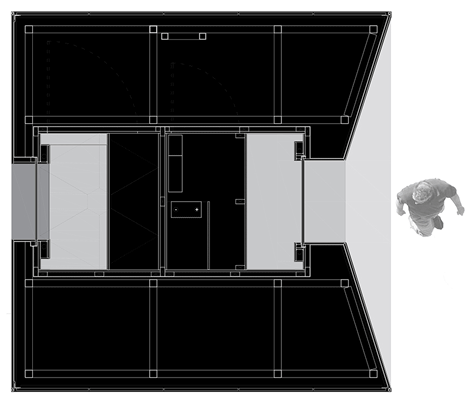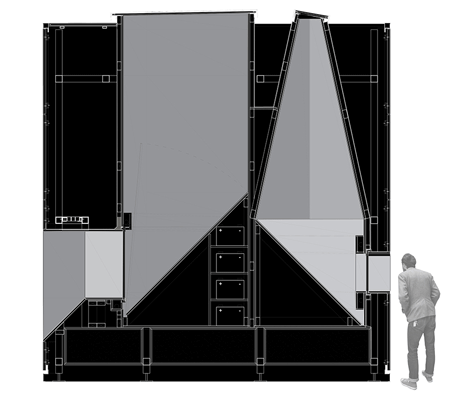Glossy black pavilion in Dublin presents Ireland's oil consumption
This inky black cube designed by De Siún Scullion Architects for Dublin's docklands reveals Ireland's current oil consumption and future renewable energy targets (+ slideshow).

Measuring 4.2 metres cubed, the volume represents the 473 barrels of oil consumed in Ireland every five minutes.
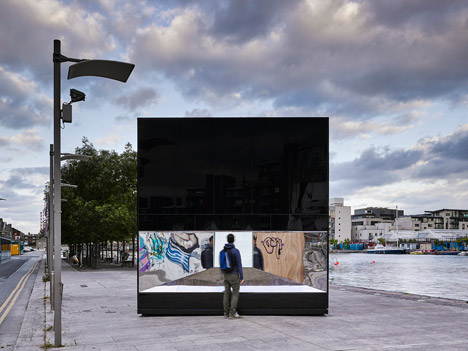
The pavilion is clad in panels of glossy black toughened glass, in reference to the viscous liquid, and resides on Hanover Quay, an area of Dublin's docklands by the River Liffey.
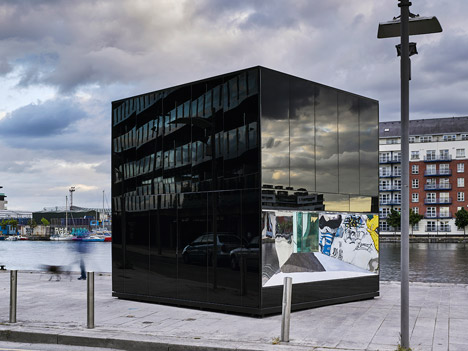
Local architect Declan Scullion won a competition run by ACE For Energy – an EU-funded body promoting the uptake of renewable energy – to design the 5CUBE Energy Pavilion.

"The concept behind the pavilion was to develop an easily replicable symbol of consumption, which could be scaled up or down, and would confront the public with the current rate of fossil fuel depletion," explained Scullion, who co-founded De Siún Scullion Architects with Mícheál de Siún in 2014.
Two mirrored bands positioned on the east and west sides of the cube. The 50-centimetre-high horizontal strip on the eastern face is designed to represent the amount of naturally sourced energy that is currently used by the country.
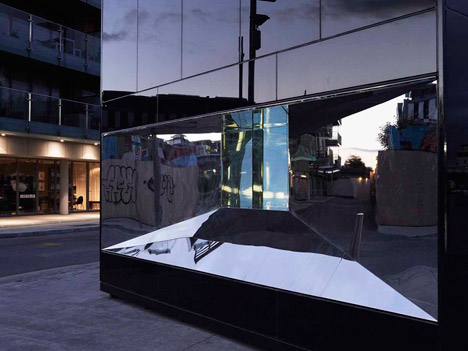
On the opposite side, a much thicker section depicts the government's renewable energy target for 2020.
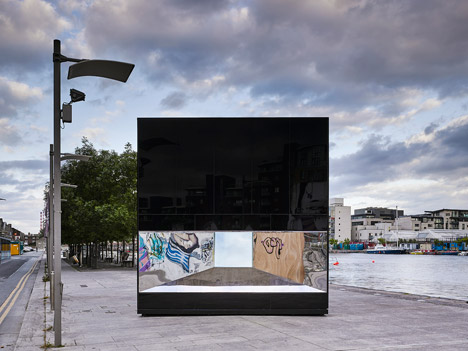
Within this larger band, mirrored facets are angled inwards towards a hole that allows visitors to peer into the interior of the box. The view is a fragmented reflection of the sky, manipulated with more mirrors to create the illusion of a globe.
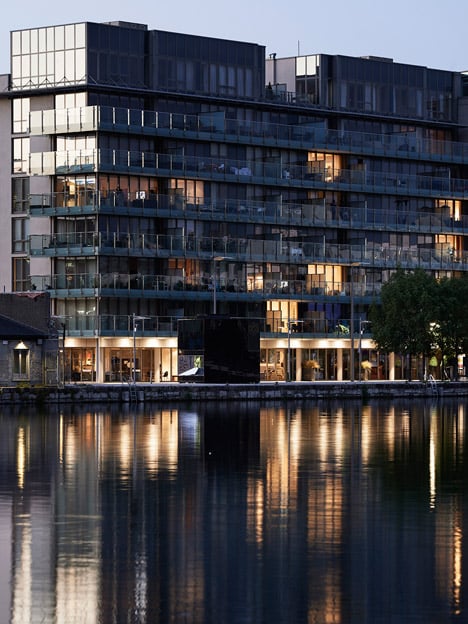
The architect sees the sky as symbolic of the wind, sun and the rain, and their potential to be harvested to produce energy.
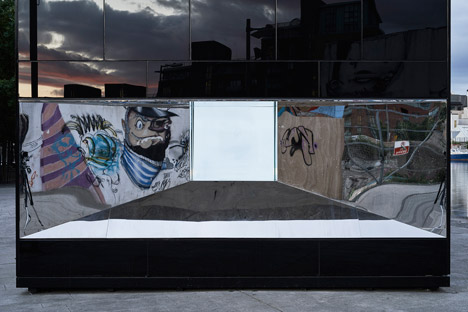
"The sky has been selected as a means of representing all the multiple forms of renewable energy in opposition to the glossy black glass mass representing oil," explained the architect.
"The sky was thought to be relevant as so many renewable energy sources are a direct or indirect result of the forces of nature."
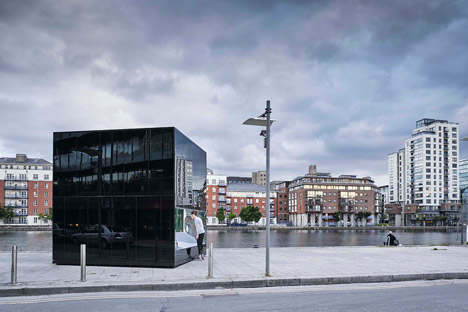
The pavilion is designed to be easily dismantled and is ballasted to its temporary location by several sand-filled boxes, so it can easily be moved when necessary.
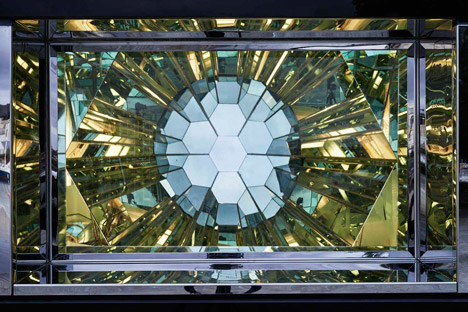
Solar panels mounted on the roof of the structure provide an independent energy source to power the lights that illuminate the interior of the pavilion.
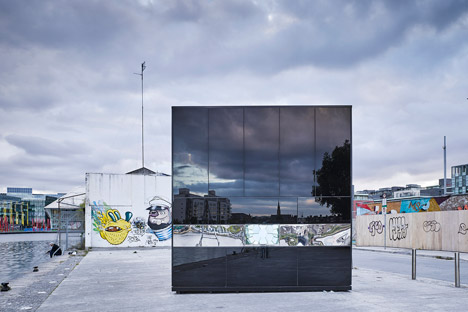
"The idea is that the installation might appear somewhere new overnight and then disappear again; a surreal and silent monolith," said Scullion.
Photography is by Ros Kavanagh.
Project credits:
Architects: De Siún Scullion Architects
Structural engineers: Casey O’Rourke Associates
Electrical engineers: IN2 Engineering Design Partnership
Contractor: Townlink Construction Ltd
